The Role of Academy of Sciences in Creation of Slovak Computer Industry
Martin Šperka
Abstract
The paper deals with the evolution of computer technology and consecutive creation of computer industry in Slovakia – the Eastern and less industrially developed part of Czechoslovakia in the years 1952-1989 at the context of Czechoslovak, COMECON and World state of art of electronics and computer technology. It analyzes how this process was influenced by the Institute of Technical Cybernetics (ÚTK) at the Slovak Academy of Sciences (SAV), summarizes positive and negative aspects of this development and aftereffects on the contemporary situation. Last and not least documents how visionary persons and their enthusiastic teams could achieve ambitious, at the first glance unreachable goals.
Introduction
After the WW2 Slovakia was mostly agricultural land with the exception of few small (including military) companies. After the 1948 started industrialization of the country, mainly environmentally harmful metal works and mills (steel, aluminum, nickel, manganese with ore imported from the USSR, Hungary, Rumania and Albania), heavy and military industry (mechanical parts and their assembling, but not electronics). The reason was fact, that Slovakia was more remote from the NATO border then the Western part of Czechoslovakia – Bohemia. Later arose factories for radio and TV receivers, dial phone sets and small exchanges.
This process created many jobs and increased regional development. But the most research and development (R&D) institutions were concentrated in the more industrially developed Bohemia. Slovak R&D was concentrated at the universities, among them at the Institute of Technical Mechanics of the Slovak University of Technology (STU) in Bratislava.
One of the research goals of this lab was to find faster computational methods and tools in modeling vibrations and a stability of engines, turbines and motor vehicles. In 1952 two doctoral students Ivan Plander and Štefan Petráš were admitted to this institute. In 1953 Slovak Academy of Sciences (SAV) was founded and among the first institutions was the Commission which later transformed to the Laboratory of Theoretical and Applied Mechanics. Petráš and Plander moved to this lab. Their research goal was to improve computing methods in modeling properties of mechanical systems. Instead of using logarithmic slide rules and electro-mechanical calculators they experimented with mathematically analogous electrical models using passive L, R, C components. But these models were laborious and inaccurate.
The First Slovak Analog Computer
The Plander, educated mechanical engineer also was radio amateur and understood electronics, designed, calculated and built a direct current, vacuum tubes amplifier with the high amplification gain.
It happened in 1956. This was the basis for the main computational units of the more precise and universal analogue computer – integrators, adders and inverters. Beside the amplifier, it was necessary to design and construct power supply units, functional generators etc. But the way from a theoretical model to the prototype was long. It required a lot of experiments and electronic components, mostly Czechoslovak made vacuum tubes, resistors and capacitors, including some German made (booty from the Wehrmacht radio stations during the WWII) resistors. The computer which was capable to solve non- linear differential equations was ready in 1958. One of the first modeling tasks was to calculate cushiony attachment of an incubator at the ambulance car. At the same time Plander lectured the subject Analog Computers at the Slovak Technical University and published the first book on analog computers in Slovakia [1], [2]. The computer is exhibited at the Museum of Computers in Bratislava [3].
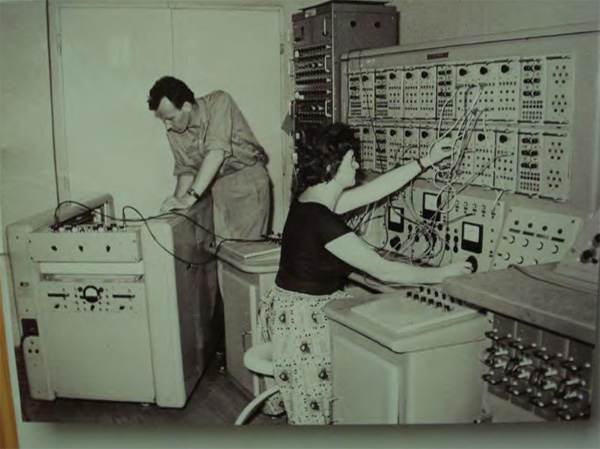
Fig 1. Professor Ivan Plander and his analog computer
The First Digital Computer[4]
In the year 1959, the Section of Technical Sciences of the SAV made a decision to transform the lab (it had department for scientific and engineering computing), which could provide computing to all SAV institutes. The idea was implemented in 1962, when the GDR made digital computer ZRA1 was installed at the new founded Institute of Machines and Automation. Plander became the head of computing department. 15 SAV institutes and 18 schools and industry institutions used this computer. Department trained 85, mostly external programmers [5].Few weeks later STU installed Soviet computer URAL 2. URAL (based on vacuum tubes) was faster, but ZRA 1 (rectangular – loop ferrite cores and Germanium diodes logic) was more reliable with more precise calculations (48 bits long words). Institute’s mission was industrial automation and Plander’s team started exploring theoretical problems of control computers in real time in order to design own one. In that time at the Institute of Mathematical Machines (VÚMS) in Prague was under development control computer with discrete transistor logic.
To purchase computer in that time was not easy. There existed CoCom embargo on advanced Western computers and those, not embargoed were extremely expensive due to the fact that the exchange rate of convertible money was high. COMECON computers were cheaper, but for the academic institutions still expensive and there was a long delivery time to get one. In the centrally planned economy, the monopoly on computer R&D in Czechoslovakia had VÚMS. In order to get government funding, Plander and his colleagues decided to name it “Fast Programmable Processor” (RPP16) instead of computer. Competent high officials did not recognize that processor is part of the computer. Approximately similar situation was in Hungary, where computers developed at academy of sciences used the name TPA “Programmable Analyzer with Memory”.
Rpp16 –The First 3th Generation Control Computer In Czechoslovakia
The project RPP16 started in 1965. One year later The Institute of Mechanics and Automation disjoined. One offspring – The Institute of Technical Cybernetics (ÚTK) was founded in 1966. Petráš became CEO and Plander vice director. At the same year, at the computing center, which was the part of ÚTK installed discrete transistor based Danish computer Gier. Instead of purchasing spare parts for this computer (from the allocated budget), Plander’s team (especially Ivan Kočiš, head of hardware group) decided to purchase bipolar TTL integrated circuits (ICs) made by the US company Texas Instruments (TI) and used them in RPP16 laboratory model. This was actually illegal, but they knew that TESLA Rožnov – Czechoslovak electronic company planned to start production of TI compatible ICs and RPP16 would be based on Czechoslovak components. Using no Western parts (or at least minimum) at any electronic systems was an ideological requirement.
This tactical decision resulted in the first Czechoslovak 3rd generation control computer. Young engineers and mathematicians, who defended their master thesis at ÚTK participated on the design and implementation of laboratory model. Architecture and basic machine code was simulated on Gier computer as well computing ICs layout and routing of small printed circuits boards (PCBs) or wiring between PCBs. Instructions were microprogrammed (ferrite core ROM) so it was easy to add new or modify existing one. ÚTK developed basic system software – drivers of electrical typewriter, paper punched tape reader / writer, bootstrap, loader, assembler and FORTRAN compiler.
Cooperating institutions developed flat multi wire cable (embargoed), bigger format PCBs and connectors. One task was to develop platted wire cylindrical magnetic memory (1976). During the construction of the laboratory model, Plander and Kočiš started negotiations with potential manufacturers. The first candidate, TESLA Bratislava (radio recieivers manufacturer) had no interest to enhance its assortment. Finally TESLA Nižná (TV sets producer) in the least industrially developed part of Slovakia – Orava agreed. But it was necessary to reconstruct their recently built plant in Námestovo, originally planned for assembling mobile military radio stations mounted on vans.
In order to speed up know – how transfer and train workers for a new technology, Plander and Kočiš proposed creating Research and Development Lab (VVL) somewhere between Bratislava and Námestovo [6]. It succeeded in Žilina (1969). The first step was training fresh graduated VVL engineers at ÚTK. They built 3 prototypes (1970) and later in cooperation with development a construction office Konštrukta Trenčín and ÚTK they redesigned model with bigger PCBs and worked out technological documentation for the production.
This started in 1974 and until 1978 TESLA Námestovo produced 139 RPP16S and 104 RPP16M (mini) computers [7]. More advanced operating system and application software was developed in a new established computer business, installation, services and software houses with cooperation with their customers and partners. RPP16 computers were installed in many factories, electric power stations, one coal mine, research institutions, universities and even in one library. This was beginning of the Slovak computer industry which enabled automation of many industrial processes, created new jobs and platforms for computer education [1].
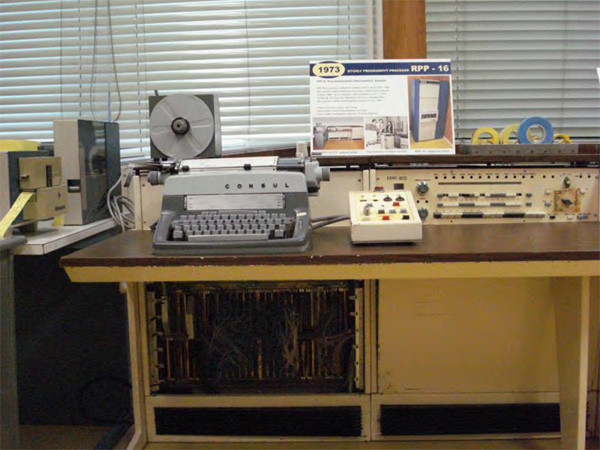
Fig. 2: RPP 16S at the Museum of Computers in Bratislava
The System Of Small Electronic Computers (SMEP)
When the 3rd generation control computers project was near to the finish a new one “Research of Automata and Computers of the 4th and next generations” was proposed, approved and funded by Plander and Kočiš. In December 1969 Plander participated at the meeting of the International Commission for Computer Technology in Moscow. The topic was system of Small Electronic Computers (abbreviation in Slovak SMEP) in the frames of COMECON. On this meeting, participants constituted the Board of Chief Engineers (BCE).
In 1970 during the process of normalization after the Warsaw Pact invasion, all employees were background checked, especially those who were in higher positions in 1968. Many had to relieve their posts, among them Petráš (CEO) and Plander (vice CEO). But Plander remained chief engineer and responsible for RPP16 project, however with very little competences and support. Managing this big project with many subjects was very hard. But fortunately teams at ÚTK and partner institutions were young, enthusiastic and initiative engineers and programmers, so the project could be successfully finished. Plander proposed to include RPP16 in SMEP project, but it was not accepted.
The final decision was that the template for SMEP became (in that time) the world´s most successful minicomputer – Digital Equipment Corporation (DEC) PDP-11. Some countries continued in their national programs. In Czechoslovakia it was ADT 4XXX (equivalent of Hewlett-Packard HP 2100 and 21MX) developed in VÚMS. RPP 16 production was imperatively stopped in 1978. The last programmed system software for RPP16 was multiuser operating system RSM F16, emulating PDP-11 RSX 11, programmed by three students of STU in Bratislava [8]. It was possible due to the new PCB card with 4 asynchronous serial interfaces using UART LSIs targeted for SMEP computers.

Fig. 3.: Exposition of integrated circuits designed and made in ÚTK SAV, TESLA Piešťany and VÚST Prague at the Museum of Computers in Bratislava
After 1970 the chief manager for Czechoslovakia was Kočiš. I was nominated for membership at the working group for the electronic components and participated at several meetings in the USSR. Almost all ICs needed for the construction of PDP-11 equivalent were produced in COMECON countries. Among missing was Universal Asynchronous Receiver and Transmitter (UART), which was the key elements for serial communication. At ÚTK with the aid of self-developed interactive graphics system we designed masks and TESLA Piešťany manufactured (1976) the first UART in COMECON [9]. In 1974 chief engineer for Czechoslovakia became new ÚTK CEO. But he was not expert in computer technology.
Since 1976 VVL Žilina was involved in SMEP activities and in 1977 the office of Czechoslovak SMEP chief engineer moved to this laboratory, which transformed to the Research Institute for Computer Technology (VÚVT). VÚVT developed many computers and peripheral units. These were made in TESLA Nižná (CRT alphanumerical and graphics terminals for SMEP and RIAD systems, vector or raster displays and stations compatible with DEC and Tectronix peripherals), TESLA later ZVT Námestovo (after RPP16 they were 16bit PDP-11 compatible SM 3-20, SM 4-20, SM 50/50-2, SM 52/11, SM 52/11+, SM 16-22 and 32 bit VAX 11/738 compatible SM 52/12) and ZVT Banská Bystrica (8 and 16 bit microcomputers based on 8080, 8086 and 8088 processors: SM 50/40-1, M 16-1, PP 01 – 06) including intelligent terminals, office stations, microprocessor development and robot control systems, special military systems: SP 30 and 60 – computers for rugged conditions SPMXP 16 – SIMD architecture based on 16, 8bit microcomputers) for interactive image processing and other applications [10], [11]. There were some plotters and digitizers developed at VÚMS and made in Bohemia included in SMEP program.
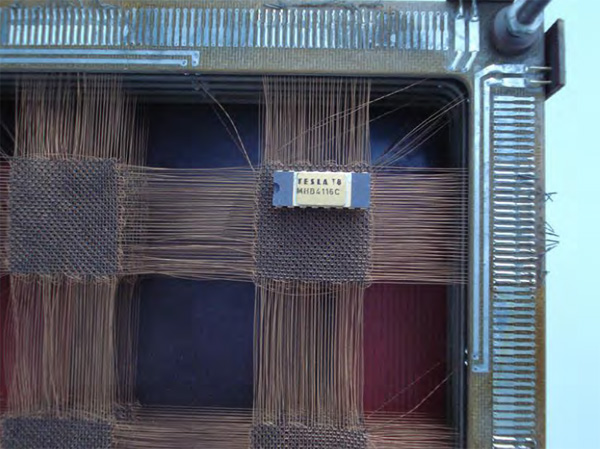
Fig. 4.: 1kb x 18 ferrite core RAM from RPP16 prototype with 16kb MOS RAM made in TESLA Piešťany
The Role of ÚTK SAV
In 1979 Plander has become CEO and Petráš scientific secretary. As a research and scientific institution ÚTK concentrated on theoretical research in the fields of parallel computers and algorithms, knowledge based systems,
speech synthesis, and linguistics, computer vision, robotics, electron beam lithography, digital circuits testing – including testing IC chips inside with controlled electron beam. In 1982, after the agreement between the Slovak, Czechoslovak and Soviet academies of sciences The International Laboratory for Artifficial Intelligence was created, where worked not only scientists from COMECON but also few scientists from the West.
In order to speed up transferring results of theoretical research to industry, ÚTK founded Development and manufacture department, where several models of SMEP and non SMEP computers were developed. They were:
SM 50/50-2 was PDP-11 compatible computer with processor based on 2 bit sliced, bipolar ALU IC from TESLA Rožnov – MHB3000 (equivalent of Intel 3000). This computer used exclusively Czechoslovak made components, as was proposed by manufacturers and was installed in mechanical engineering plant for robots control. But at VVL Žilina developed SM 50/50-1 used 4 bit ALU slices with AMD 2900 ICs and later USSR made equivalents.
SM 54/30 was computer vision system, with 256 x 256 pixels resolution, some hard-wired algorithms for image preprocessing, interface for 1 to 4 cameras controlled by SM 3/20 or SM 50/50 machines used in several institutions for image processing and computer graphics.
Parallel associative SIMD machine had architecture inspired by the Goodyear Staran computer, but the construction and machine code were different. It had (maximum configuration) 2048 simple processors and was controlled by SMEP and later IBM PC compatible computer. Associative Programming Language (ASPL) assembler, macro ASPL, expanded FORTRAN and the language for parallel computing based on Modula 2 and Actus were developed. Targeted applications were in RADAR signal processing. The project finished in 1989 and 8 pieces were produced at the joint ÚTK and BEZ Bratislava CYBEREX company [12].
In cooperation with Elektromont company, ÚTK SAV designed single bit microprocessor and supporting ICs, based on implemented on CMOS Gate Array GAC 1200 (designed at ÚTK). These ICs were made in TESLA Piešťany and applied in industrial controllers (replacement for electromechanical rely) for example in iron mill factory in Košice (1982-1987).
Division in Banská Bystrica designed distributed system with node computer, communication processor and 4 microcomputers SM 50/20 used in several industry enterprises. This division significantly contributed to the creation of the Academic Computer Network SANET (connectivity with Internet implemented in 1991), at the beginning used not only by academic but also government institutions.
Another project was clone of 32bit RISC microprocessor Acorn Computers Ltd. ARM. Masks for the technology were ready in 1989 but the technological processes in Piešťany did not start because of political regime changed and the CoCom embargo was released. This project was part of bigger one – Data Flow Computer for Knowledge Based System. This project started in the time when Inmos International Transputer computers appeared (1985). IMS T414 had more then 200 000 transistors, what exceeded our technology. ÚTK proposed to implement functional equivalent with two separate VLSI ICs, one of them ARM (25 000 transistors) and the second serial 4 ways interface. Original ARM chips were used in ÚTK designed PC XT accelerator with own ANSI C compiler and computer graphics ISO standard library (GKS) [13].
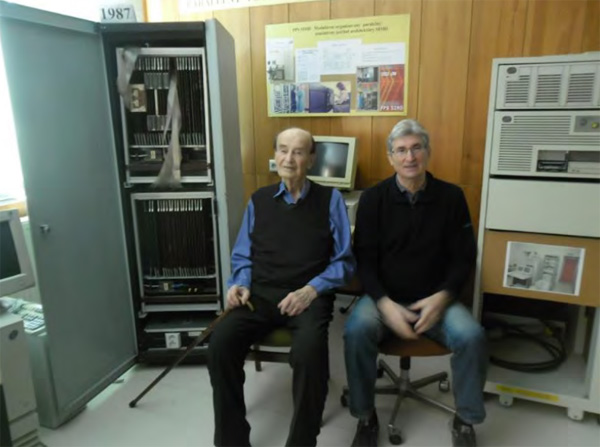
Fig. 5: Professor Ivan Plander at the front of parallel associative SIMD computer, designed by a team of Karol Richter (at the right) at the Museum of Computers in Bratislava
Slovak Microelectronics and Microcomputers[14]
The main prerequisite for modern computers are integrated circuits. TESLA Rožnov started production of bipolar SSI TTL ICs in 1967 and production of discrete transistors moved to Piešťany. At the Research Institute for Communications (VÚST) explored MOS technology ICs. In Rožnov believed that this technology has no future.
because of the lower speed. Within the frames of research of 4th generation computers ÚTK designed and simulated logic array, composed from identical universal logic modules (1971) and intended to implement it on one chip at VÚST. But they proposed the design do at ÚTK.
That was reason why ÚTK developed interactive IC design system First bigger MOS IC designed with this system was logic module with 300 transistors for the Institute of Control Problems, Soviet Academy of Sciences in Moscow (1973). Another goal was to create microelectronics lab for some technological processes in cooperation with TESLA Piešťany. Within the frame of these activities, in 1973 ÚTK constructed experimental electron beam lithography machine (EBM) from the Japanese scanning electron microscope controlled by PDP 11 minicomputer. In 1982 GDR made ZBA 10/1 EBM was installed and used for the IC masks manufacturing [15].
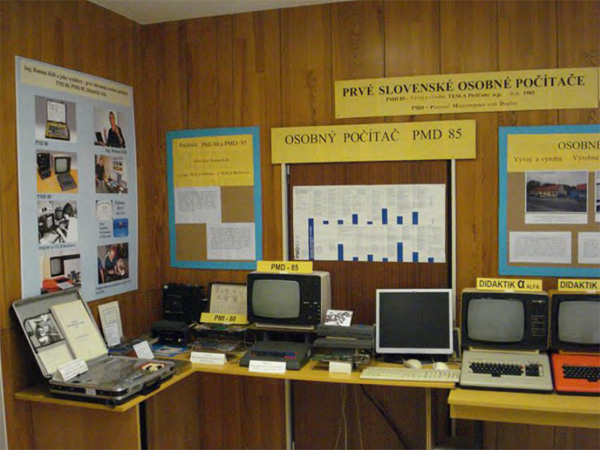
Fig. 6: Part of the exposition with Slovak made 8 bit microprocessors at the Museum of Computers in Bratislava.
In 70s semiconductor MOS memories became cheaper then magnetic ferrite cores and demand for production MOS RAMs at TESLA Rožnov came not only from the RPP16 side but also computers produced in Bohemia. Moreover, Intel released 4004 and later 8008 microprocessors. In 1973 we analyzed I8008 with the goal to clone it, but meantime Intel launched 8080, with more advanced n-channel Silicon Gate Technology. In 1979 TESLA purchased license on 16kb MOS RAMs using this technology. VÚST designed equivalent of 8080 chip with supporting LSIs. They were followed by 8bit single chip microcomputers.
Few custom bipolar TTL or I2LICs for SMEP computers were designed in VÚVT Žilina and made in TESLA Rožnov. VÚVT used IC CSD system developed at Comenius University in Bratislava.
In 80s started era of microcomputers in Czechoslovakia. Emerged several 8bit single board microcomputers, home or industrial computers. In Slovakia they were MHB 8080 based PMI-80, PMD-85 (TESLA Piešťany and Bratislava) Didaktik Alfa (Didaktik Skalica), PP01, SM 50/40 (VÚVT and ZVT B.Bystrica) or Didaktik Gama, M (Skalica), Maťo (agriculture farm in Závadka) with GDR made Z80 clone. Smuggled Western home computers Atari, Commodore or Sinclair (mostly used for games at home) were cheaper, but those, made in Slovakia were installed at secondary schools (only few of them had own mainframe or minicomputers at that time). Programming courses of BASIC, assembler or even Pascal (compiler developed at Comenius University) became a part of curriculum
In 80s 16 bit IBM PC compatible desktop computer PP06 was developed at VÚVT and produced by TESLA Bratislava and ZVT B. Bystrica. Intel 8088 microprocessors were imported from the West and later their equivalents from the USSR.
1989 and After
After year 1989, when HiTech embargo finished, computer and semiconductor companies (not only) collapsed. Some people joined the world known IT companies like DEC, IBM, Dell, Lenovo, AT&T, Siemens. Sometimes, those who before cloned products of their new employer. Others started small or medium enterprises for
reselling, installing or servicing imported computers. Some created new, maintained or upgraded old applications of their former customers. Many engineers and scientists found jobs in abroad at IT companies or universities.
But there are few successful IT Slovak companies producing own software and applications internationally. Among them is maybe the most Slovak world known ESET company, experts in computer security. ÚTK SAV was transformed to the UI (Institute of Informatics) and continues in theoretical research within the frames of EU projects. Beside education IT departments of universities in Bratislava, Košice or Žilina.
Conclusions
Analyzing positive and negative aspects of era 1952– 1989 we can summarize following. At early 50s continued conservative attitude towards the Western invented Cybernetics. Next 10 years slowly started „computerization“, mostly with punch card machines and imported computers. In Bohemia already existed few computer companies. Late 60s were years of liberation of East-West relations. In those years RPP16 project started. In 1969 in Bratislava was founded the Computer research center with contribution of United Nations Organization Development program, CRC/UNDP and there was installed, in that time the most powerful computer in Czechoslovakia (CDC 3300). This institution significantly contributed to research in theoretical computer science, software engineering and Enterprise Information Systems [16]. Then a process of „normalization“ after 1968 followed. This caused stricter embargo, but the Western companies were still interested in business with COMECOM. It was clear, even to some (not all) high ranking politicians, that IT plays strategic role. Government invested in R&D and production of computers, unfortunately not enough, existing economy did not allow more.
Despite the centrally controlled economy, finances and energy were inefficiently distributed. Especially when microprocessors appeared, R&D became chaotic and uncoordinated. Many companies developed and produced practically the same models in low quantity. There existed competition between Czechs and Slovaks as well between institutions inside. But this competition was not so efficient as for example in Silicon Valley. It was not based one economical criteria (all institutions were financed from the same state budget) but more or less on the enthusiasm of developers and political or ideological prestige of some managers.
International cooperation also was unefficient. Companies produced big assortment of systems and components in low quantity (however there were exceptions). Often they were not able to cover home market, not speaking about export. But sometimes they preferred exporting over the home market. The ratio of revenues versus R&D costs was low. Lagging behind the West increased.
But for young and enthusiastic scientists, engineers and programmers with good fundamental education in mathematics, physics and technology it was interesting and challenging era, despite the fact that they had limited chance to travel and directly communicate with their colleagues in the West, who had better working conditions including financial benefits.
References
- Kohút, Š.: Akademik Ivan Plander, život a dielo. VEDA, vydavateľstvo SAV – Centrum spoločnýchčinností SAV v spolupráci s Ústavominformatiky SAV, 2019, 443 s., ISBN 978-80-224-1743-3
-
Plander, I.: Matematickémetódy a programovanieanalógovýchpočítačov. Vydavateľstvo SAV, Bratislava 1969, 622 s.
-
Múzeumpočítačov VS CSČ SAV Bratislava. http://www.vystava.sav.sk
-
Dujnič, J., Frištacký, N., Molnár, L., Plander, I., Rovan, B.: On the History of Computer Science, Computer Engineering, and Computer Technology Development in Slovakia. In: IEEE Annals of the History of Computing. Vol. 21. No.3. 1999
-
Kohút, Š., Plander, I.: Pred 55 rokmiinštalovali v SAV prvýčíslicovýpočítačnavedecko-technickévýpočty. In: Šperka, M.(Ed): Spomienkynakybernetiku – príbehypracovníkov a spolupracovníkov ÚTK SAV, CD ROM (ISBN 978-80-973155-1-1), SMEP etc. BanskáBystrica, 2018, s. 82-84.
-
Plander, I.: Personal communication.
-
Bulla, F.: Spomienkynavýrobu RPP16 z pohľaduOravy. In: Šperka, M.(Ed): Spomienkynakybernetiku – príbehypracovníkov a spolupracovníkov ÚTK SAV, CD ROM (ISBN 978-80-973155-1-1), SMEP etc. BanskáBystrica, 2018, s. 130-133.
-
Kohút, Š., Mlích, V.: RSM F-16 a našemladíckenadšenie. In: Šperka, M.(Ed): Spomienkynakybernetiku – príbehypracovníkov a spolupracovníkov ÚTK SAV, CD ROM (ISBN 978-80-973155-1-1), SMEP etc. BanskáBystrica, 2018, s. 130-133.
-
Šperka, M.: Rozvojmikroelektroniky pre výpočtovútechnikunaSlovensku. In Luby, Š. (Ed.) Od tranzistora k integrovanémuobvodu (kapitoly z dejínčesko-slovenskejmikroelektroniky). VEDA, vydavateľstvo SAV, Bratislava 2018, s. 145 – 158.
-
Gábik, M.: Príspevok VÚVT Žilina k rozvojuvýpočtovejtechniky v Česko – Slovensku. Časť 1, 81s. MARKAB s.r.o. Žilina
-
Gábik, M.: Príspevok VÚVT Žilina k rozvojuvýpočtovejtechniky v Česko – Slovensku. Časť 2, 95s. MARKAB s.r.o. Žilina, 2016
-
Richter, K.: Paralelnýasociatívnypočítačovýsystém PPS SIMD. In: Šperka, M.(Ed): Spomienkynakybernetiku – príbehypracovníkov a spolupracovníkov ÚTK SAV, CD ROM (ISBN 978-80-973155-1-1), SMEP etc. BanskáBystrica, 2018, s. 130-133.
-
Frankovič, B., Hluchý, L., Plander, I., Vojtko, J. (Eds): 50 rokovkybernetiky, automatizácie a riadenia, výpočtovejtechniky, informatiky a informačnýchtechnológií. Ústavinformatiky SAV, 108s., Bratislava 2006.
-
Áč, V.:Príspevok k históriimikroelektronikynaSlovensku. In Luby, Š. (Ed.) Od tranzistora k integrovanémuobvodu (kapitoly z dejínčesko-slovenskejmikroelektroniky). VEDA, vydavateľstvo SAV, Bratislava 2018, s. 49 – 99.
-
Kostič, I.: ElektrónoválitografianaSlovensku a jejvšestrannévyužitie. In Luby, Š. (Ed.) Od tranzistora k integrovanémuobvodu (kapitoly z dejínčesko-slovenskejmikroelektroniky). VEDA, vydavateľstvo SAV, Bratislava 2018, s. 122 – 144.
- Filustek, R.: Počítač CDC 3300 voVýskumnomvýpočtovomstredisku OSN Bratislava. In: Šperka, M.(Ed): Múzeumpočítačov VS CSČ SAV Bratislava. Spomienkypamätníkovpočítačov. http://www.vystava.sav.sk/category/pohlady-do-historie/
Об авторе: Museum of Computers Computing Center of the Slovak Academy of Sciences, Bratislava, Slovakia
Материалы международной конференции Sorucom 2020
Помещена в музей с разрешения автора
23 ноября 2020
